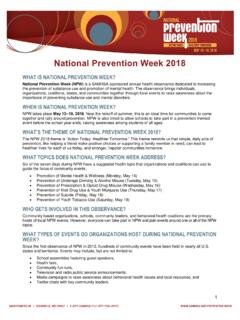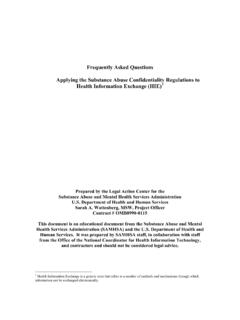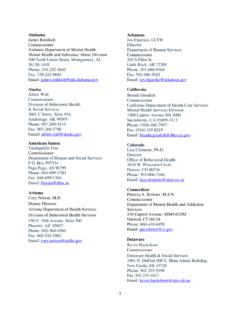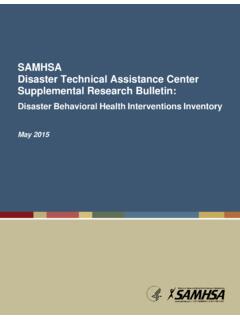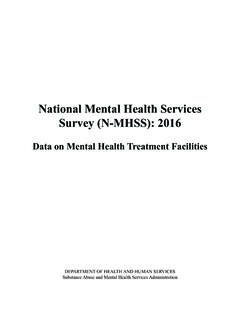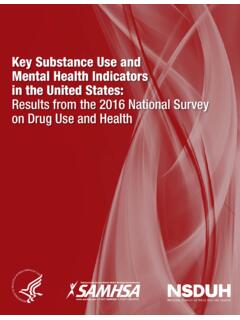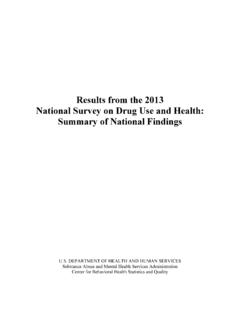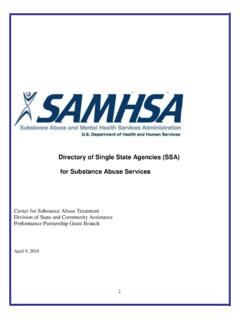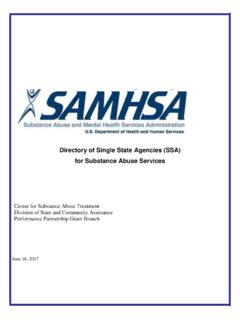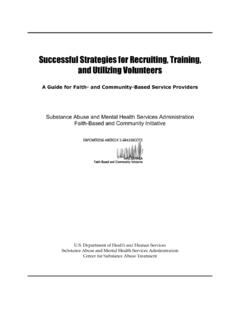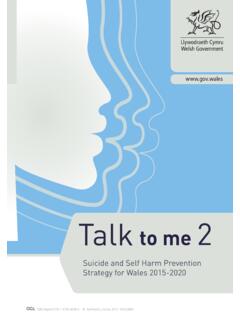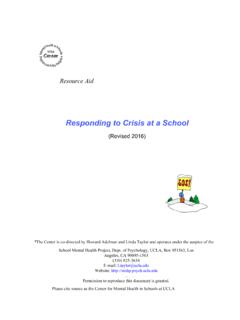Transcription of Community Readiness Manual on Suicide Prevention in …
1 Community Readiness Manual on Suicide Prevention in Native Communities Assessing Community Readiness for change and increasing Community capacity for Suicide Prevention Creating a climate that makes healthy Community change possible Barbara A. Plested Pamela Jumper-Thurman Ruth W. Edwards 1 Plested, ; Jumper-Thurman, P.; & Edwards, (2006, September). Community Readiness : Advancing Suicide Prevention in Native communities ( Community Readiness Model handbook). Center for Applied Studies in American Ethnicity, Colorado State University, Fort Collins, CO.
2 Handbook revised January 2014 for Kauffman & Associates, Inc. 2 Table of Contents Overview .. 3 Acknowledgments .. 3 What is the Community Readiness model? .. 5 Why use the Community Readiness Model for Suicide Prevention ? .. 6 What should NOT be expected from the model? .. 6 Process for using the Community Readiness Model .. 7 Step-by-step guide to doing an assessment .. 8 Dimensions of Readiness for Suicide Prevention .. 9 Stages of Community Readiness .. 10 How to conduct a Community Readiness Assessment .. 12 Community Readiness Assessment Suicide Prevention interview questions.
3 14 Scoring Community Readiness interviews .. 24 Community Readiness Assessment scoring sheet .. 26 Anchored rating scales for scoring each dimension .. 28 Using the assessment to develop strategies .. 34 Goals and general strategies appropriate for each stage .. 35 Brainstorming an action plan .. 38 Record of Community strengths, conditions or concerns, and resources .. 40 Record of Community strengths, conditions or concerns, and resources .. 41 Important points about using the model .. 42 Note on how to do a brief assessment.
4 42 How other communities have used the model for other issues .. 43 Ways the Community Readiness model can be used .. 46 Validity and reliability of the Community Readiness Model Assessment tool .. 47 Bibliography .. 50 3 Overview The Tribal Training and Technical Assistance (TTA) Center is a project of the Substance Abuse and Mental Health Services Administration (SAMHSA) of the Department of Health and Human Services being implemented by Tribal Tech, LLC (prime contractor) and Kauffman & Associates, Inc. (KAI) (subcontractor).
5 Tribal Tech and KAI are both American Indian-owned, women owned small businesses with extensive experience working on federal contracts in Indian Country. Through our SAMHSA work, the Tribal Tech/KAI Team will provide comprehensive broad, focused, and intensive training and technical assistance (TTA) to federally recognized tribes and other American Indian and Alaska Native (AI/AN) communities seeking to address and prevent mental and substance use disorders and Suicide , and to promote mental health. KAI will provide Intensive TTA to AI/AN communities to build Community capacity for planning, implementing, and sustaining culturally relevant, evidence-based holistic Prevention efforts.
6 The Tribal TTA Center s Intensive TTA Team will engage 40 AI/AN communities by 2018. In January 2014, KAI worked with Pamela Jumper-Thurman and Barb Plested to revise the Community Readiness Manual (this document) and the Community Readiness Assessment questions to focus on the issue of Suicide Prevention . Training on the Community Readiness Model was also conducted with the Tribal TTA Center s intensive team members. In turn, the Intensive TTA Team will provide training to the participating tribal communities on the use and application of the Community Readiness Assessment tool to help build Community capacity to address Suicide Prevention , and to develop culturally appropriate and Community -specific Prevention strategies based on their respective Readiness scores.
7 Acknowledgments Barbara Plested and Pam Jumper-Thurman prepared this Community Readiness Handbook for KAI. This project will work with American Indian and Alaska Native communities as they focus on Community mobilization and planning related to Suicide Prevention . In the pages that follow, the key concepts of the model are described in a practical, step-by-step manner. The purpose is to guide users in implementing the model so that they can better initiate the process of Community change and develop effective, culturally-appropriate, and Community -specific strategies for Prevention and intervention.
8 It is our hope that this handbook will facilitate those efforts in working toward healthier communities and eventually, a reduction in Suicide in Native communities. The Community Readiness Model represents a true partnership between Prevention science and Community experience. We are extremely fortunate to have shared the successful journey toward Community change with many communities throughout the world. Some of those who have been instrumental in the development of key aspects of the model and the theory behind it, and/or have been key supporters in its development and use include.
9 4 Eugene Oetting Elizabeth Robertson Michael Slater Kathleen Kelly Fred Beauvais Mary Ann Pentz Zili Sloboda Joe Donnermeyer Jill Erickson We are very grateful to the entire staff of the National Center for Community Readiness as well as the many Community based organizations and tribes for supporting our work with professionalism and zeal. In particular, the following individuals have contributed to the dissemination of the model by working directly with communities, conducting trainings, and helping to develop materials.
10 Heather Helm Robert Foley Martha Burnside Linda Stanley Roe Bubar Pamela LeMaster Gerald Rivera Dean Helzer Irene Vernon Nori Comello Kristin Kirk Mary Stimps From the front lines of Community advocacy and service provision, we acknowledge the many people over the years who have helped field-test the model and who have shared their insights. Among those who have contributed in this way are: Donna Briones Gail Wood Elizabeth "Cookie" Rose Susie Markus Diane Ogilvie Angela Moore-Parmlee Anna Huntington-Kriska Hope Taft Willie Wolf Deanna Chancellor John Briggs Diane Galloway Korin Schmidt Ted Jones Randy Madigan Agnes Sweetsir Don Coyhis Kathryn Pitchford Sandra Stroud Jim Lewis Marilyn Patton Dolores Jimerson Elizabeth Lopez Teresa Cain Robin Erz Barbara McTurk Benny Ferro.
